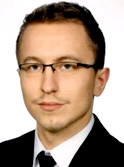The formation of pyrochlores during plasma spraying of REO and zirconia oxides powder mixture
Abstract
The pyrochlores are the promising low-thermal conductive materials for Thermal Barrier Coatings applications. In present work the concept of pyrochlore formation during APS spraying of ZrO2 and ReO was analyzed. The specially prepared agglomerated mixtures of ZrO2 with Nd2O3, Yb2O3, Er2O3 and Gd2O3 oxides were plasma sprayed using A60 plasma torch on NiCoCrAlY-type bond coat. The influence of plasma gasses composition on coatings’ microstructure was investigated. The results of XRD phase analysis proved formation of pyrochlores from Gd2O3 +ZrO2 and Nd2O3+ZrO2 mixtures. The formation of Er4O12Zr3 from Er2O3+ ZrO2 mixture as well as Zr3Yb4 from Yb2O3+ ZrO2 powder was detected. The presence of pure rare earth oxides (REO) and zirconia oxides was observed in all types of sprayed coatings. The microstructural assessment showed differences in porosity and thickness of obtained ceramic coatings depending of type of REO oxides. The analysis of results showed that it is possible to obtain pyrochlore ceramic coatings from pure oxides mixture. The plasma energy was not efficient for full formation of pyrochlores, therefore the presence of pure oxides was observed.
Downloads
Copyright (c) 2019 Tadeusz Kubaszek, Wojciech J. Nowak, Paweł Pędrak, Kinga Trybus, Karol Ślemp, Marek Góral

This work is licensed under a Creative Commons Attribution 4.0 International License.
Authors retain full copyright to their individual works.
The Journal of Mechanical and Energy Engineering (JMEE) publishes fully open access articles.
Open Access benefits:
- High visibility – all articles are made freely available online for everyone worldwide, immediately upon publication.
- Increased visibility and readership.
- Rapid publication.
- All articles are CC BY licensed. The final article can be reused and immediately deposited in any repository.
- Authors retain the copyright to their work.
By publishing with us, you retain the copyright of your work under the terms of a Creative Commons Attribution 4.0 International (CC BY) license.
The CC BY license permits unrestricted use, distribution and reproduction in any medium, provided appropriate credit is given to the original author(s) and the source, a link to the Creative Commons license is included, and it is indicated if any changes were made. This means that you can deposit the final version of your work in any digital repository immediately after publication.
We are committed to providing high-level peer review, author and production services, so you can trust in the quality and reliability of the work that we publish.








